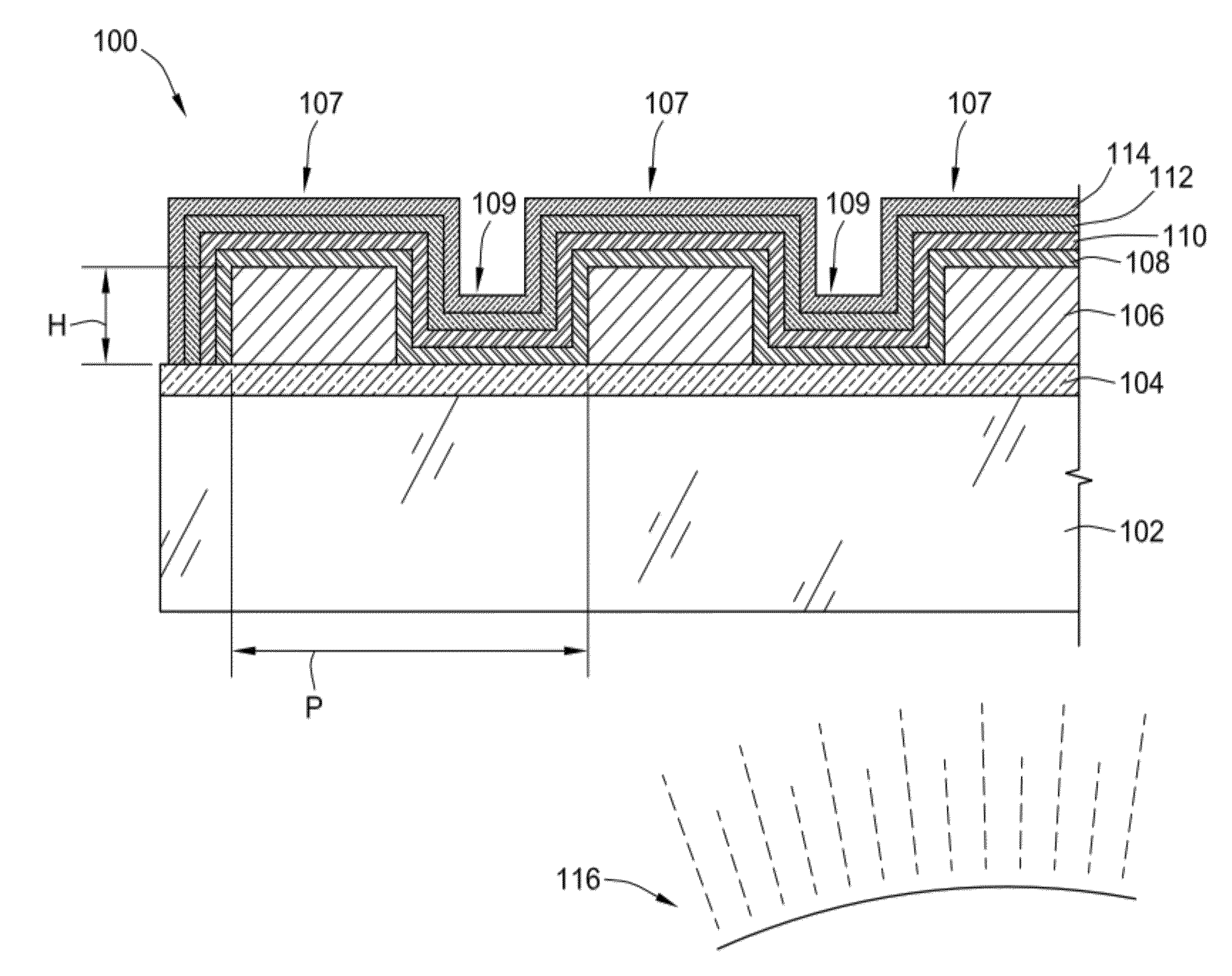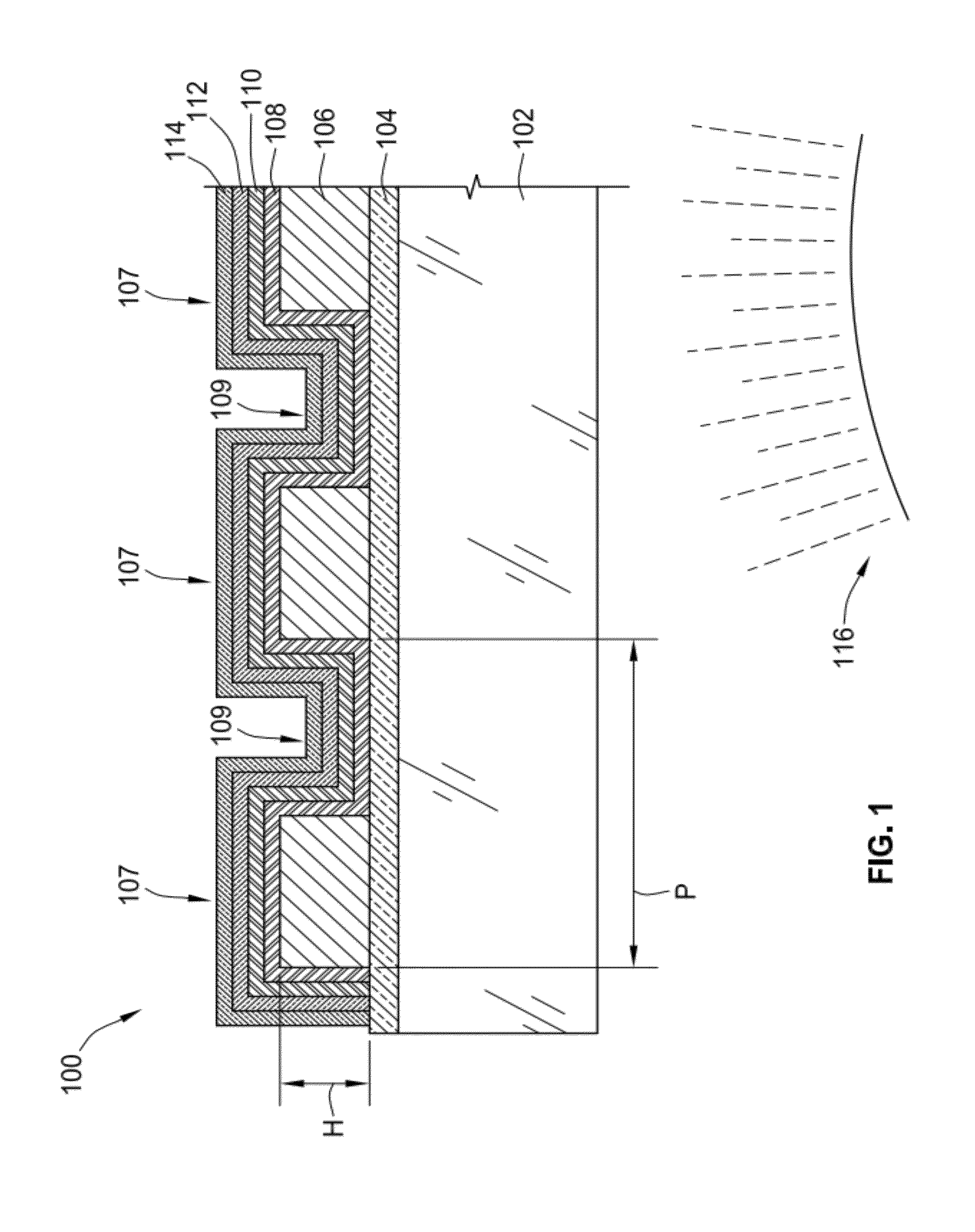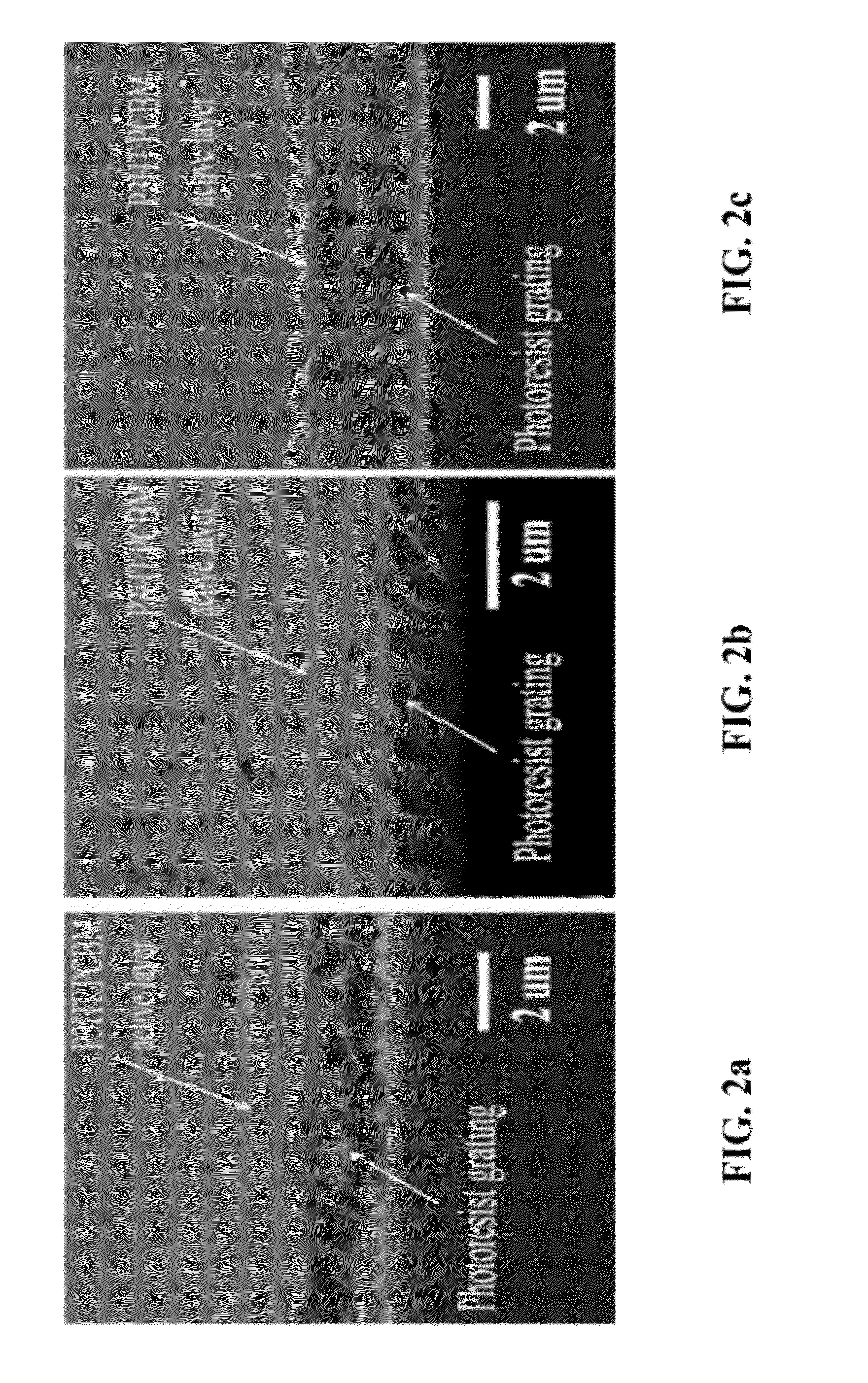Textured Micrometer Scale Templates as Light Managing Fabrication Platform for Organic Solar Cells
- Summary
- Abstract
- Description
- Claims
- Application Information
AI Technical Summary
Benefits of technology
Problems solved by technology
Method used
Image
Examples
Embodiment Construction
[0024]Polymer-based photovoltaic devices have gained a lot of attention in the last decade due to their flexibility, solution-processibility, potential low cost, and roll-to-roll manufacturing capability. As discussed at length above, the performance of these devices is limited by several factors. The high energy band gap of the polymer materials poses a serious limitation on the capability to harvest lower energy photons from sunlight. Moreover the charge carrier mobility of the materials is also moderate which makes it necessary to keep the thickness of the active layer low. Thus there is a conflict between the higher optical absorption from thicker layer and the efficient transport of carriers, which has to be considered carefully to determine the optimal thickness of the active layer.
[0025]This conflict can be resolved in embodiments of the present invention by using a three-dimensional (3D) microscale textured grating shaped solar cell geometry. The solar cells are fabricated o...
PUM
| Property | Measurement | Unit |
|---|---|---|
| Thickness | aaaaa | aaaaa |
| Thickness | aaaaa | aaaaa |
| Thickness | aaaaa | aaaaa |
Abstract
Description
Claims
Application Information
 Login to View More
Login to View More - R&D
- Intellectual Property
- Life Sciences
- Materials
- Tech Scout
- Unparalleled Data Quality
- Higher Quality Content
- 60% Fewer Hallucinations
Browse by: Latest US Patents, China's latest patents, Technical Efficacy Thesaurus, Application Domain, Technology Topic, Popular Technical Reports.
© 2025 PatSnap. All rights reserved.Legal|Privacy policy|Modern Slavery Act Transparency Statement|Sitemap|About US| Contact US: help@patsnap.com



